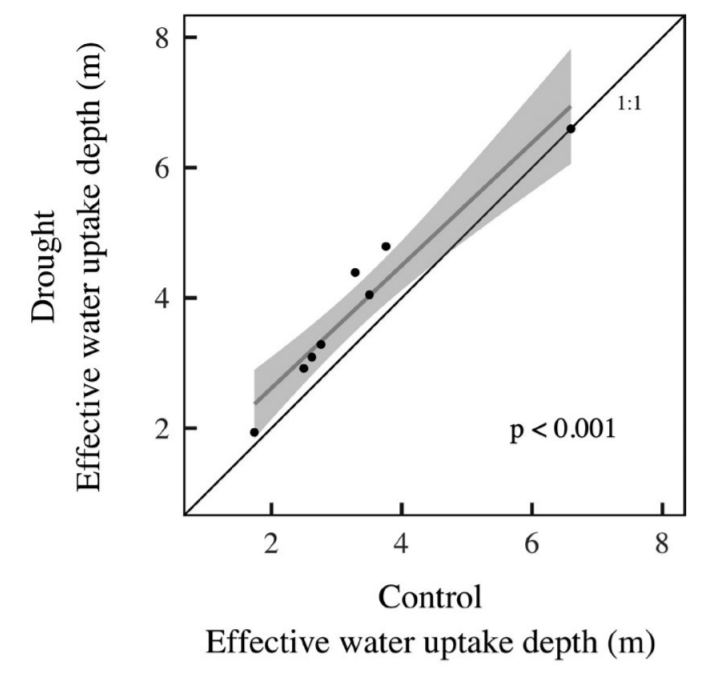Shifting root water uptake to deeper soil depths under drought allows homeostatic regulation of aboveground physiology in wet-tropical forest trees
The Science
This study examined how tropical rainforest trees respond to artificially induced drought. We used a canopy crane located in Queensland, Australia, to measure a variety of aboveground physiological traits such as photosynthesis and transpiration, among others. We coupled these measurements to an optimization model to calculate shifts in rooting depths. We discovered that trees maintained homeostasis in aboveground traits through increasing the soil depth in which they foraged for water.
The Impact
Drought is the major culprit of increasing rates of tropical tree mortality. This has large implications for the carbon cycle because tree death reduces the potential carbon storage of forests, and drought is anticipated to become more frequent and severe globally. These results point to a key trait that we must quantify to understand and predict future tree responses to drought, namely rooting depth. These results further suggest that tropical forests may be more resilient to drought than previously anticipated.
Summary
We discovered that wet-tropical trees can maintain homeostatic regulation of aboveground traits, such as photosynthesis and transpiration, through an experimentally imposed, multi-year drought. The trees achieve this apparent non-response to drought through increasing the soil depth at which they obtain water for transpiration. Drought induced declines in surface soil moisture content, but deeper soils maintained sufficient water to provide the tree’s transpirational requirements, leading to homeostasis in aboveground traits.

Contact
Nate McDowell, Pacific Northwest National Laboratory, nate.mcdowell@pnnl.gov
Funding
This work was funded by NGEE Tropics.
Publications
Pivovaroff, et al. 2021. Stability of tropical forest tree carbon‐water relations in a rainfall exclusion treatment through shifts in effective water uptake depth. Global Change Biology, 27(24), pp.6454-6466. https://doi.org/10.1111/gcb.15869